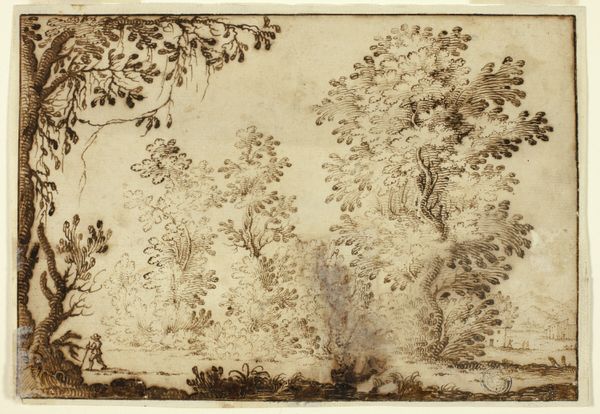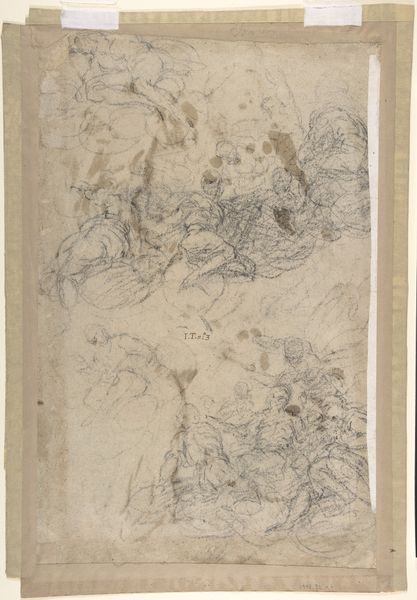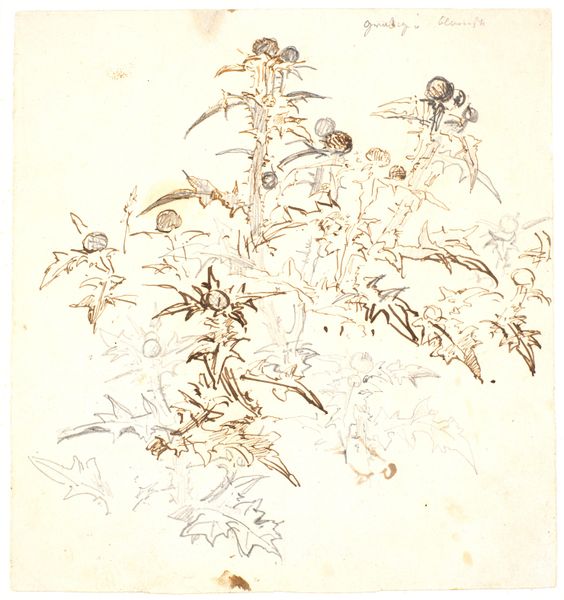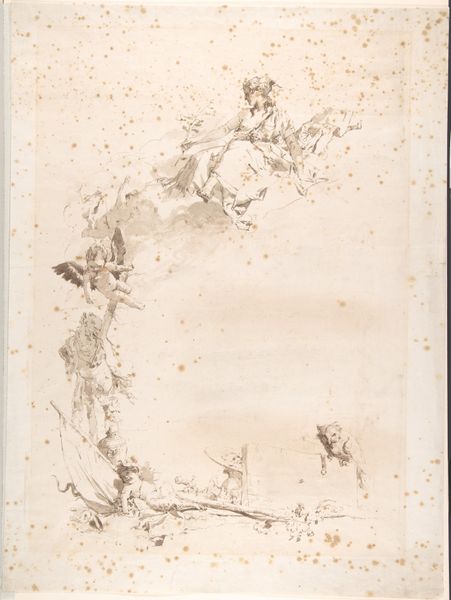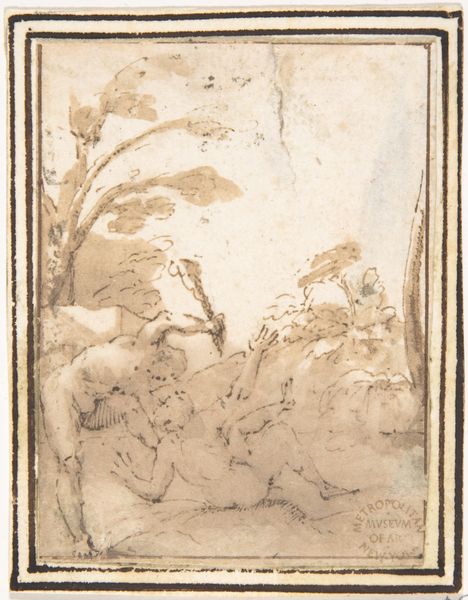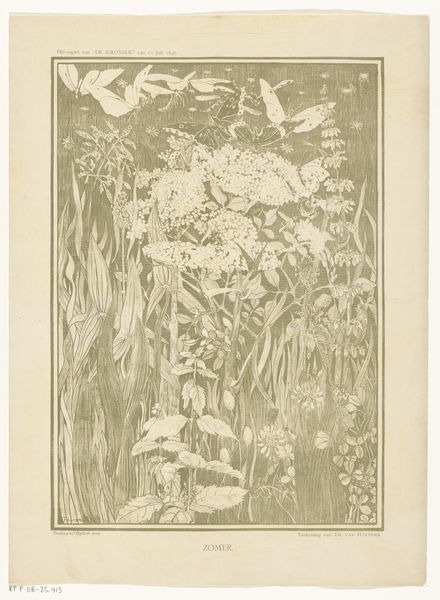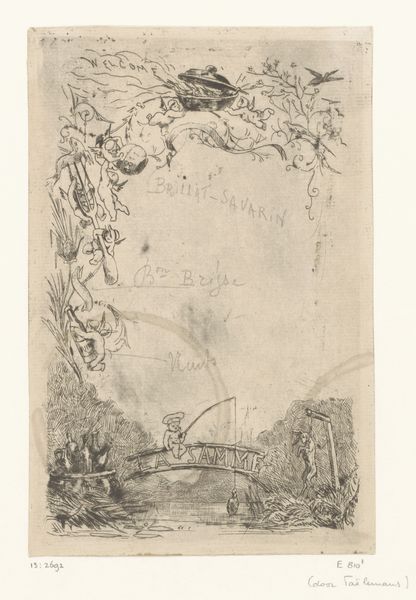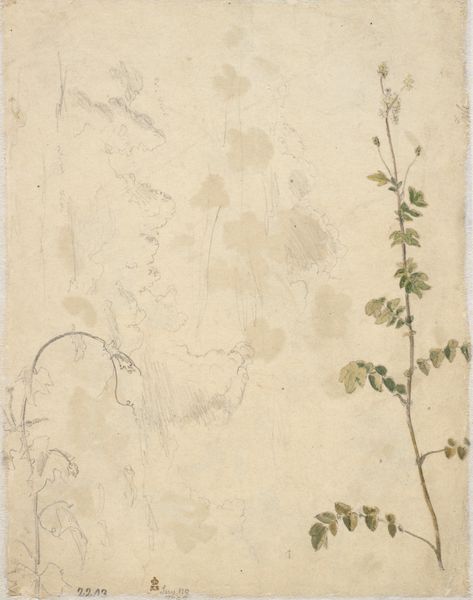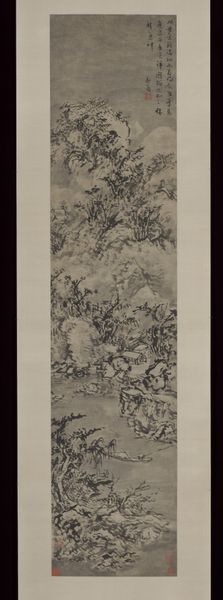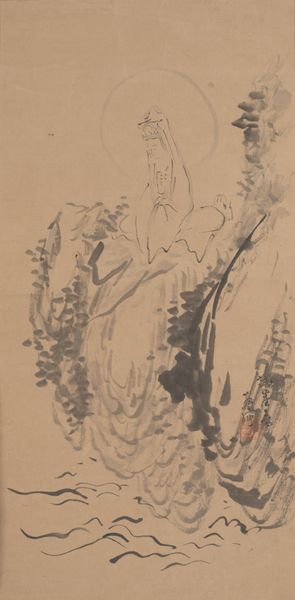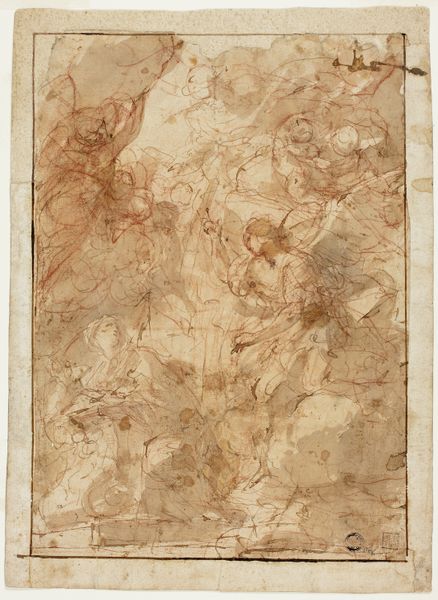
Dimensions: overall: 54.6 × 18.9 cm (21 1/2 × 7 7/16 in.)
Copyright: National Gallery of Art: CC0 1.0
Editor: Giambattista Canal's ink drawing, "The Assumption of the Virgin," dates to about 1785. It depicts the Virgin Mary surrounded by a heavenly host. What I find fascinating is how the figures seem to swirl upward, creating this dynamic sense of ascension. What do you make of this piece? Curator: The Baroque period, even its later expressions like this drawing, thrived on dramatic representations that resonated with viewers on an emotional level, which often reinforced religious and political ideologies. How does Canal utilize the visual vocabulary of his time to create a powerful image for its intended audience? Think about the sheer number of figures, their postures, and how they contribute to this sense of divine spectacle. Editor: I can definitely see the drama you’re describing. There’s so much movement! All of those figures crowding into one space really reinforces this overwhelming feeling of religious experience. What I’m still wondering about is where this image would have appeared? Was it common to see ink drawings displayed so publicly at the time? Curator: Not quite. A drawing like this probably wasn’t meant for direct public display. Drawings often served as preparatory sketches for larger paintings or engravings, aiding the artist in resolving composition or testing ideas. Who do you think saw these? What access did they have? Editor: So, mainly fellow artists, or patrons, maybe? It gives it this sense of a behind-the-scenes look at art creation, almost. Curator: Precisely. Considering the context surrounding religious imagery in 18th-century Venice, could the medium of the sketch allow Canal to explore interpretations of the "Assumption" outside the constraints of established iconographies or the scrutiny of religious institutions? Editor: That makes a lot of sense. It's like a peek into the artist's thought process, less polished but potentially more revealing about the ideas being explored. I’ll definitely look at other drawings with that in mind. Curator: I agree. Viewing art within its historical and cultural contexts allows for a much deeper understanding of the artist's intentions and its reception within the societies that created and consumed these works.
Comments
No comments
Be the first to comment and join the conversation on the ultimate creative platform.

